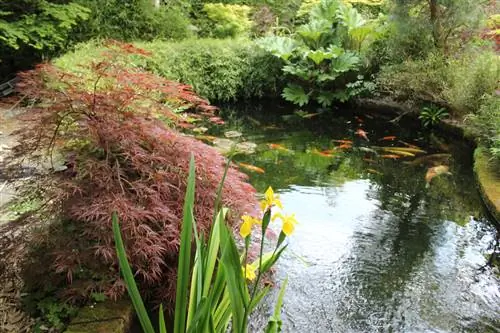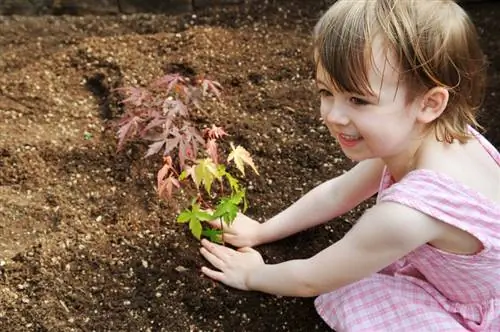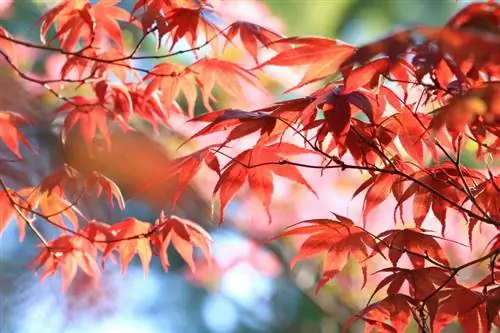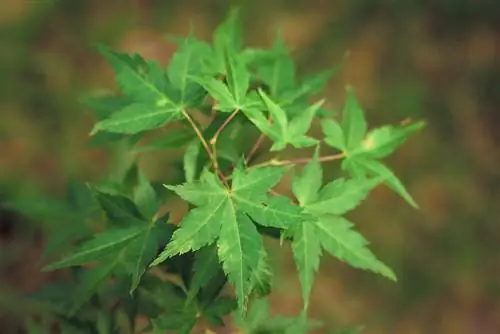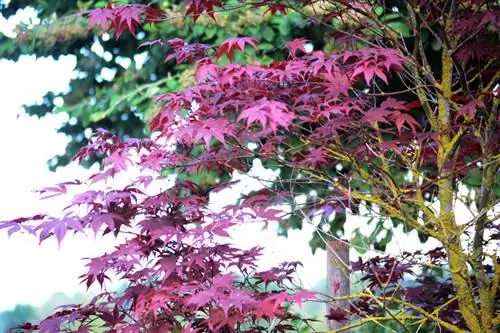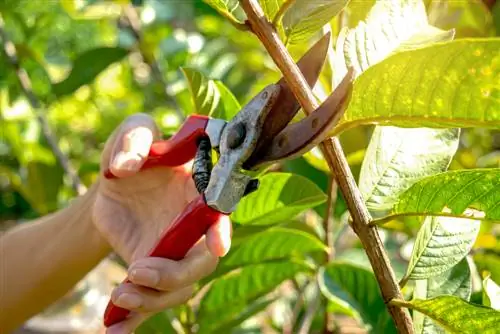- Author admin [email protected].
- Public 2023-12-16 16:46.
- Last modified 2025-01-23 11:20.
The small Japanese maple, also available commercially under the name Japanese maple (Acer palmatum), cuts a particularly good figure as a solitary plant in the garden or on the balcony and terrace. The colorful tree is a real eye-catcher, especially in spring during the flowering period and in autumn.
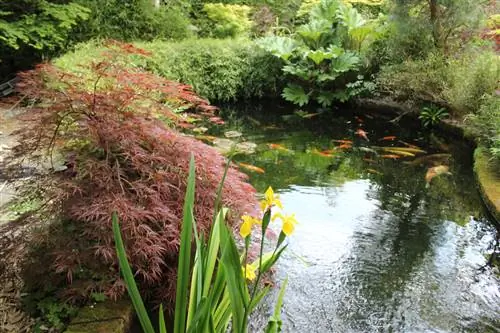
Where should a Japanese maple be planted?
The ideal location for a Japanese maple (Acer palmatum) is a bright, partially shaded and wind-protected place. It prefers nutrient-rich, well-drained and slightly moist soil with a slightly acidic to neutral pH value. Direct sunlight and calcareous soils should be avoided.
A sheltered, partially shaded location is ideal
However, the Japanese maple only shows its splendor in a location where it feels comfortable. The question of the right place is of great importance, after all, some varieties only develop their magnificent autumn colors in the brightest possible location with lots of light, while others cannot tolerate direct sunlight. Therefore, be sure to pay attention to the description of the variety label before planting. However, you definitely can't go wrong with a bright, partially shaded spot that is as sheltered from the wind as possible - the Japanese maple is particularly sensitive to sharp easterly winds.
Nutrient-rich, slightly moist substrate preferred
With regard to soil, the Japanese maple feels most comfortable in a nutrient-rich and very permeable and slightly moist substrate. The soil ideally has a slightly acidic to neutral pH value, which can also be improved by adding peat (€15.00 on Amazon) and sand. However, calcareous substrate with a high alkaline pH value is not tolerated and should therefore be replaced accordingly.
Tip
It is best to plant the Japanese maple near a body of water, such as a garden pond. There is higher humidity there, which can, among other things, prevent leaf tip drought - which manifests itself in brown leaf tips. If you also put a few koi and goldfish in the pond, the picture of a Japanese garden is perfect.

